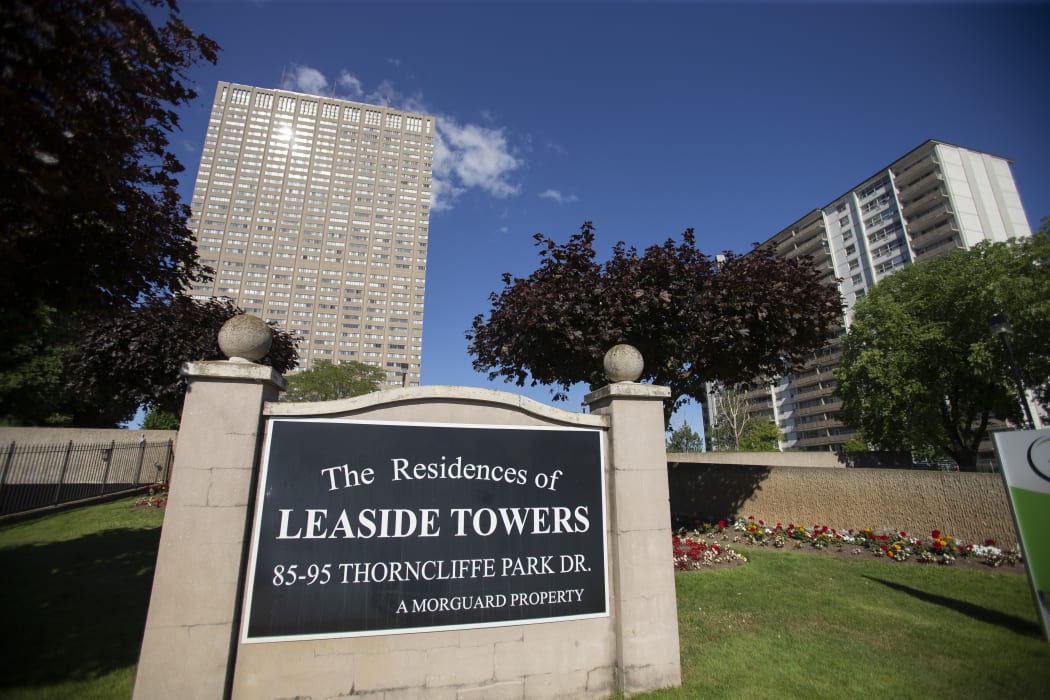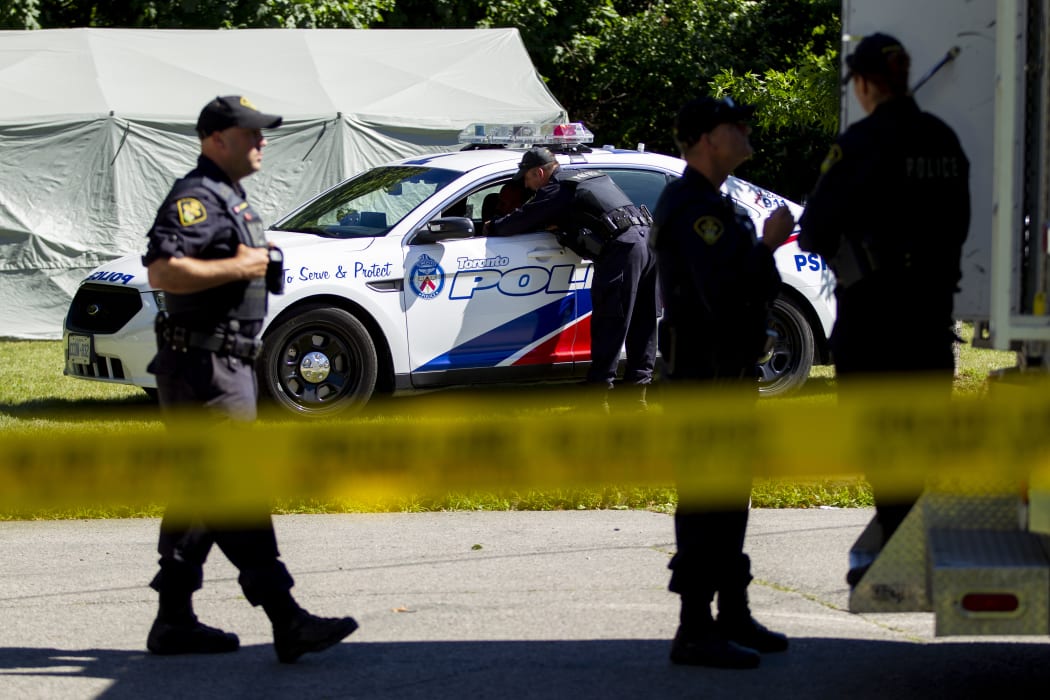A former landscaper in Canada accused of sexually assaulting, killing and dismembering men he met in Toronto's Gay Village district over seven years has pleaded guilty to eight counts of first-degree murder.

The sun reflects off of the Leaside Towers in Toronto, where accused serial killer Bruce McArthur lived at the time of his arrest. Canadian police discovered human remains buried at a separate property where McArthur worked as a landscape gardener. Photo: Geoff Robins / AFP
Police last year found the remains of seven of the men in large planters at a property where McArthur had worked and used as storage. The remains of the eighth victim were found in a ravine behind the same property in midtown Toronto.
The admissions bring an end to a mystery of disappearances that have plagued Toronto's gay community, the largest in Canada, for years. Some had suspected a serial killer and pushed for answers but an initial police task force in 2012 did not lead to an arrest.
Bruce McArthur, wearing a black sweater, stood up and said "guilty" as each charge was read on Tuesday. Sentencing and victim impact statements are to start 4 February.
Prosecutor Michael Cantlon said the cases ranging from 2010 to 2017 involved sexual assault or forcible confinement and said the bodies were hidden and dismembered. Several of the victims were apparently strangled.
McArthur, now 67, moved to the Toronto area around 2000 and previously lived in a suburb where he was married, raised two children and worked as a travelling salesman of underwear and socks.
His landscaping business was small, but he periodically hired workers, including a 40-year-old man who disappeared in 2010.
Police set up two special task forces to look into the disappearances of men in the Gay Village area of Toronto after some went missing.
The alleged victims fit a pattern: Most were of Middle Eastern or South Asian descent and lived on the margins of Canadian society, their disappearances attracting little attention.
One victim hid the fact that he was gay from his Muslim family. Another was a recent immigrant with a drug problem. Another victim was homeless, smoked crack cocaine and was a sex worker.
But then Andrew Kinsman vanished. The 49-year-old LGBQT activist and former bartender in Toronto had many friends. When he suddenly went missing the day after Toronto's gay pride parade, his friends noticed quickly, and so did the police.
Police set up second special task force to look into the disappearances of men in the Gay Village shortly after Mr Kinsman went missing.
He was last seen on a surveillance video getting into McArthur's van on 26 June, 2017, and his DNA was later found inside along with the ligature apparently used to strangle him.
Members of the LGBTQ community had long voiced concerns about a potential serial killer and pushed for answers in light of the disappearances.

Members of the Ontario Provincial Police confer with colleagues after a third day of searching for human remains in a ravine behind a home on Mallory Crescent in Toronto, Ontario, July 6 last year in connection with the investigation into McArthur. Photo: Geoff Robins / AFP
Karen Fraser, who lives at the home where McArthur stored the body parts, said he was evil but she had not known that version of him.
McArthur worked at the home for 10 or 12 years for Ms Fraser and her husband. He used the home as storage for his landscaping business and would often visit the garage several times a day.
"Terrible things were done," she said. "This is just a shuffling, broken man. As he should be."
Fraser, who said she had met two of the victims, said she didn't see any remorse in McArthur in court.
"We call it Bruce A and Bruce B," she said. "Bruce A was a man who seemed to have made decisions about his life and was very happy with it. He enjoyed his job, his clients and never got bored with the plants. He was very talented at it. He was very fond of his children and was a great grandfather."
She called him the best friend, neighbor and relative that anyone could have.
"Bruce B? Who was that? I don't know," she said. "I never saw a temper. Just a happy guy. You would never ever think. I believe all his other clients said the same."
Toronto police detective David Dickinson called the guilty pleas the best possible outcome.
Asked if there should be a public inquiry, Dickinson said if police made mistakes in the investigations, they should learn from them.
Haran Vijayanathan, a community activist and the executive director of the Alliance for South Asian AIDS Prevention in Toronto, said there is a sense of relief among the families.
"But there is also confusion and questions as to why," he said.
- AP

